It’s a ‘what have you done lately for me’ world these days. Consumers are so saturated with ads and media, that staying loyal to a brand is downright difficult. That is, unless that brand can become a part of the consumer’s routine.
Based on my decade long experience in creating video solutions for brands, I have developed a simple, 3 step process to increase consumer engagement for almost any brand. There are two caveats:
- You need to have some sort of marketing platform. This can be an email list or social media followers. It is impossible to increase consumer engagement if there is no way to easily reach that consumer base.
- To be most effective, it requires a small time commitment and marketing budget per month.
These steps are a fool proof method to attract, and keep consumers engaged throughout the year.
However, I must be clear that these steps are just the basis on how to do it. As with many processes, actually executing it to perfection may take some trial and error, as I will explain below.
These steps present a blueprint for identifying value, developing a way to deliver it, and proper execution to maximize your budget. When reading below, try to have a dual perspective. Look at it as a brand owner/manager and then try to picture it as a consumer. Seeing it from both angles will give you a better overall picture.

Step 1: Identifying Value
Times have changed, and fast. The ‘sales approach’ has grown stale. Consumers are no longer interested in what you say about your brand. They are interested in what other’s are saying, or in another words, it’s reputation. It is documented that people pay more money for shoes at Zappos simply because of its stellar service reputation. They trust in the brand.
Building this trust is a matter of offering real value to your target market. This post is an example of the value I offer. I have years and years of video experience, and how to use it to grow brands. This experience is ‘valuable’ to other brands looking to use video to grow their brand. That is the value I have to offer.
If you are a financial planner, you can offer tips and strategies to make better financial decisions. A doctor can offer health tips, and prevention updates. A mechanic can talk about ways to make cars last longer and/or more efficient. Or they can talk about how to make more money to other mechanics. It all depends on your target market.
The way I determine value for my clients is by starting with these two questions:
- Who is your target market?
- How does your service/product add value to their life?
To me, this is the basic essence for any successful business. Answering these questions, if not done already, is essential. For example, Edit Cellar’s target market is medium to large brands, agencies and filmmakers. Our services add value by offering top production value and quick turnaround. This helps our clients achieve better production value, and results for their investments.
It is important to understand you must find true value. Pretending to offer value will only go so far. When I work with a client, I usually tell them, how would you pitch your service to a best friend or close family member? What would you share with them, that you don’t with a regular client? That is how to tell what the real value is in a service/product. When we speak to regular clients, our goal is to make a sale, as it should be. That leads us to watch our words, and orchestrate our responses. However, these days, that is less effective in making a sale. People just want the truth. Being real with them may hurt the chances of a sale, but it increases the chances of building a stellar brand reputation, which is more valuable then any sale could ever be.
Zappos makes it easy, and safe, to purchase footwear online. This is why they built their entire ad campaign around the ‘unique’ customer service they offer. That leads me to step 2.

Step 2: Delivery
As I mentioned earlier, this process may take some trial and error. You may find the value you perceive to offer is different then the value your consumers choose you for. However, once you properly identify the genuine value you can add to someone’s life, the next step is conceptualizing how to deliver that.
I am going to stick to solutions in the video medium, but this value should be conveyed throughout your entire brand. That is key to conveying a cohesive brand message.
Depending on what your message, or value is, there are numerous ways to deliver it in the video medium. Obviously, it depends on which fits your brand better. However, there are some important factors to keep in mind.
1. Keep it concise
Length does not matter in my opinion. I have seen videos that take 30 seconds, and some that last over 45 mins. Both can be effective. What is important though, is keeping it concise. If your video is over 90 seconds long, it better be informative. Think of it as a TV show. There is a reason they use cliffhangers before a commercial break. They want you to come back, and if they don’t give you any reason to, you may change the channel.
Now take that concept and apply it to the internet, where emails, messenger alerts, ads, and connection issues can distract anyone at any time. If you do not attract and maintain someone’s attention, they will leave and may never come back. So be aware, that keeping your content concise is a key to engaging your audience.
2. Take Advantage of the medium
Video has some incredible capabilities to deliver information. While talking to a camera can be enough, it is just scratching the surface. Try to use visual cues to keep your audience engaged. If you, or your team, is proficient in editing, you can insert graphics, lower 3rds, and more to highlight key points. If you do not have these capabilities, take a cue from Brendon Burchard. He uses a giant notepad that he writes on in marker. Having these visual cues to reference, as well as the anticipation of the next point he will write, is one key that helps keep his audience engaged over his 40 plus minute videos.
3. Keep it consistent
Once you establish an effective method of delivery, try to keep it consistent. This will help with meeting your audience’s expectations. An example I can give on this has to do with my first blog. I began writing inspirational content about jiu jitsu and life. I built up an audience. However, I later started adding in other elements, such as business tips, movie reviews, and more. This diversification caused me to stunt the blog’s growth, and lose my core audience. They were there looking for one thing, but my content was speaking to a different audience. Don’t make the same mistake.

Step 3: Execution
Now the ideas are running rampant. You have identified your value. You know how to deliver it. Now it’s time for execution. Here are some keys we use for our clients to maximize budgets and effectiveness.
1. Pick one shoot day per month.
Want to put out a video every week? How time consuming is that? Well, it doesn’t have to be. Pick one day a month, and shoot all of your content on that day. Then, deliver one ‘episode’ per week. We tend to shoot 4 ‘episodes’ in one day per month for our clients for this very reason. This keeps the time commitment to a minimum, while achieving the consistency needed to make an impact.
2. Set up a Delivery System
We recommend following this protocol we have developed for getting the most out of your content.
Upload your video to a Vimeo or YouTube channel, or both. This is important for having a home base for your content, as well as making it easy to find for search engines. Be sure to take the time to properly ‘tag’ your videos. If you are unsure how to do this, check out The Ultimate Guide to Proper Youtube Video Tagging.
If you have an email list, or popular rss feed, take the time to deliver this content through it. I usually recommend writing a blog post (short and concise) to go with the video. This helps with SEO (search engine optimization), and keeps your users engaged. Instead of waiting for them to come to you, this alerts them that there is new content available. We use Mail Chimp to create a newsletter that delivers the new content to email inboxes on a consistent basis.
3. Social Media
Videos are like having weapons in your marketing arsenal. Take advantage of them by promoting them via social media. Here are some tried and true methods to getting more views.
- Facebook – blast them out on your page and tag relevant people.
- Twitter – same as above. We recommend creating a custom hashtag for your brand to associate with this content. #cellarmagic
- Pinterest – Yes, you can place videos on pinterest. While this is new, for certain brands it can be quite effective.
- Google+ – create a hangout for special fans to watch the premieres of your content.
- Popular Blogs – is your content relevant to a certain market? Find the blogs that have the most followers in that market and offer them the content for free. If it is truly valuable (and not salesy), any blog would love the free content.
- Bookmarking sites – Digg, Stumble Upon, and more are great ways to increase search engine visibility for any content on the web.
4. Half life
Nowadays, we move so fast, we forget what we have done. Just because you created a video 6 months ago, does not mean it is old and holds no value. I can not tell you how many times I get comments on content we created years ago. If it’s the first time a viewer sees it, you can believe it is brand new to them.
For example, while working with Dojo Muscle, I created a video about the key to using Facebook to grow your martial arts school. Until the information becomes obsolete, this video is great to blast through social media, or include in a future newsletter. Many brands stop promoting their old content, because it seems dated to them. If the information is still relevant and valuable, the only thing dated is the day it was created. Don’t let this stop you from using it to grow!
If you found this content valuable, please follow me on twitter or like us on facebook to receive future updates!

